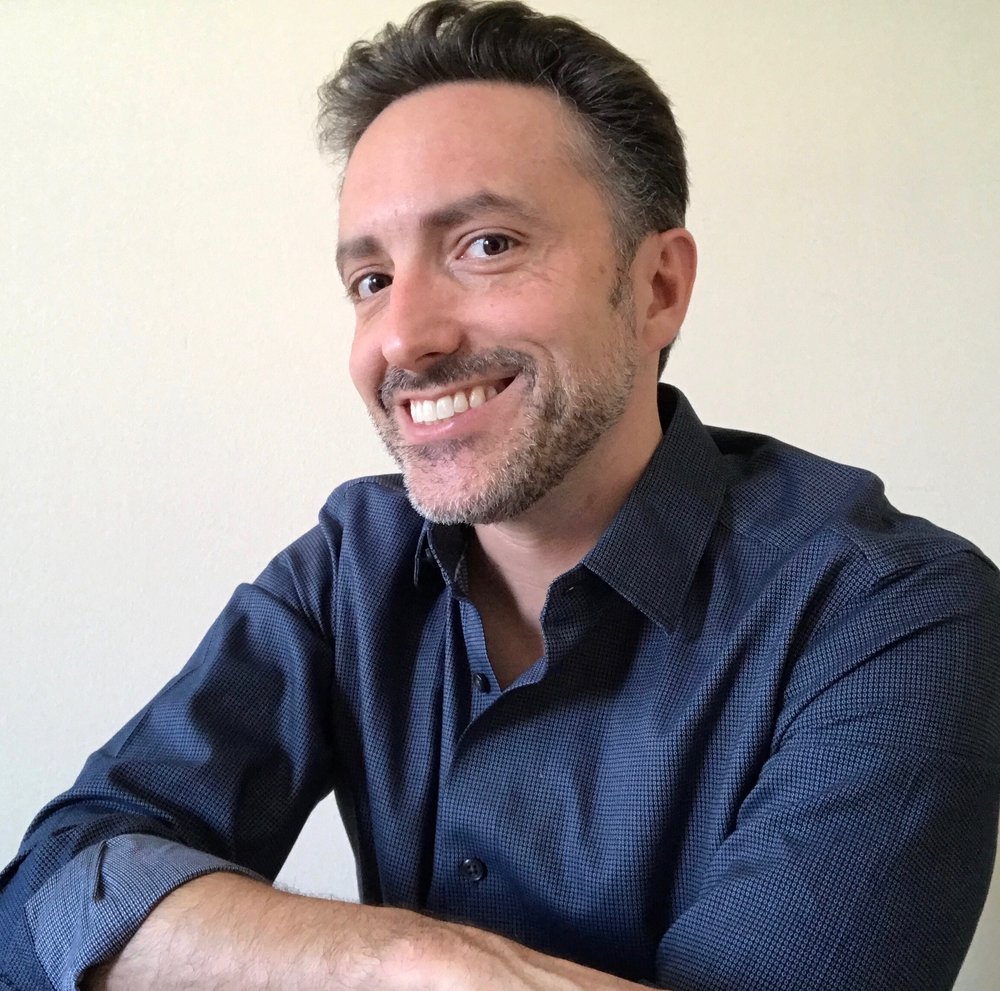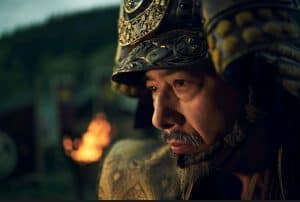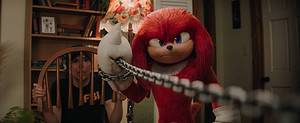Christopher Mitten
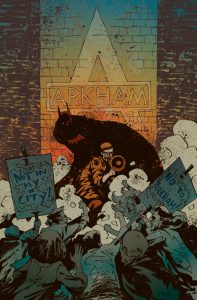 Artist Christopher Mitten has had a wide ranging career. His talents have been highly sought after for his original takes on a variety of projects and characters. From Hellboy to Batman, Wasteland and Umbral, his unique and distinctive style can be counted on to bring originality and quality to whatever project he touches.
Artist Christopher Mitten has had a wide ranging career. His talents have been highly sought after for his original takes on a variety of projects and characters. From Hellboy to Batman, Wasteland and Umbral, his unique and distinctive style can be counted on to bring originality and quality to whatever project he touches.
In this case, he is working with friend and fellow artist/writer Jeremy Haun in the ComiXology Original, 40 Seconds. Here they tell the tale of what happens when aliens send the blueprints for a space portal and we’re just dumb enough to build it. It is classic Science Fiction presented in a fresh and original style, thanks in no small part to our guest. So let’s welcome Artist Christopher Mitten to GeekVibesLive Interview. Thanks for spending some time with us, Chris.
The Beginning
GVN: So let’s start out with the prerequisite background questions… it’s in my contract. How did you get your start in drawing comics? Was working in art it something you desired at an early age or did it come later in your life?
CM: It’s just something I always did, drawing. Long before I was reading comics, even on an occasional basis, I was drawing Star Wars or Transformers or stuff like that, or making my own strips. There was always a stack of paper with makers and pencils and pens at the ready. I was way more into the comics section of the newspaper than the stuff on the spinner rack at the grocery store, though that didn’t stop me from pestering my mom or dad for sixty-five cents for an occasional Spider-Man or whatever happened to catch my eye.
The interest in comic books proper came later, around sixth or seventh grade—so however old that’d make me: eleven? twelve?—through a friend who was really into them, and this time, for whatever reason, it stuck. I was already drawing so instead of making strips I made a little hop and started drawing comic book comics. Mainly though, especially at that age, I just enjoyed reading them.
GVN: And as far as your Art goes?
CM: As for actually working in art, I guess it was always there, the plan to try to do something with it; as a kid I loved animation and design, so I thought maybe advertising or storyboarding or things along those lines; maybe somehow, some way, do something in movies. I was and am a book-nerd, a film-nerd, so these things felt oddly tangible and accessible to me. Comics as a job, as a profession that actual adults do, for whatever reason, never even entered my head. I enjoyed drawing and reading them, but as for something I might do as a job or, weirder to me, a career, that all came later. From fifteen to twenty-one I worked at a comic book store and there, surrounded by all that stuff, the tumblers in my head started to fall into place.
GVN: Which artists were your inspirations? Whose work made young Christopher Mitten think, I can do that?
CM: Too many to list, really. I mean, you take away a little bit of something from everyone. And I don’t think it was so much a matter of “I can do that”—I’m STILL not sure I feel that way—rather, it was more an extension of what I was already doing, and telling stories in this way looked like it could be fun.
GVN: Early on, did you have any mentors or someone who encouraged your artwork? There always seems to be someone who believed in a creator where others did not. Who was that person or persons for you?
CM: I guess just kind of the usual: family and friends, a couple really great art teachers in junior high and high school. I was very fortunate along the way to have support and encouragement from a lot of great people, all kind of saying “you’ll never know if you don’t try.”
First Break in Comics
GVN: Nothing is more important for someone to encourage your talents. sounds like you were fortunate in that area. What was your first big break in the comics industry and how did that come about? Did you feel that you were ready when that time came? Your career since then says you were.
CM: First break in comics came in 2002 at what I think was still called Chicago ComicCon at the time. For a few years before that, I’d kind of stopped drawing and pretty much stepped away from comics entirely—just kind of burnt out on it all—I suppose, and trying, frantically, as one does in their mid-twenties, to figure out life and work and how is it all going to come together to form some vague means of support.
As much as I tried to ignore it, to push it away, it was starting to occur to me that I actually really loved telling stories and drawing comics, so, with a couple months before the convention, I sat down and starting drawing a story. I wanted at least ten pages of sequentials, of storytelling, because I knew that’s what editors where, rightly, looking for: can this person clearly tell a story; without the benefit of words, can they understand what’s happening on those pages?
Whatever Happens
GVN: So going in, were you concerned about rejection? I spoke to artist Paris Cullens awhile back and he said that the biggest obstacle young artists have to overcome is being too afraid to try.
CM: Going in, I had a fairly fatalist attitude toward the whole thing: whatever was going to happen was going to happen. If I showed my stuff around to editors and told, in polite but no uncertain terms, that this comics thing just wasn’t for me, okay; I tried. I can move on with my life and I can still draw for fun. If there were some nibbles, if there were things in my portfolio that were salvageable and I could work on and maybe come back around and try again, well, okay, too; maybe this is where I’m supposed to be.
I showed my stuff around and was encouraged by all to keep at it; that, maybe I wasn’t quite there yet but to keep sending samples and new pages and to keep in touch. (Also, this was back when doing so meant sending a physical package of Xeroxed pages through the mail, so I’m old.) So I did, I kept in touch, every couple months or so I’d send out another stack of pages.
Then, not too long after that—maybe six months? Maybe a couple more?—I got an email from Jamie S. Rich at Oni Press asking if I’d be interested in drawing a book. I was and I did and I am forever grateful for Jamie for cracking open that door for me, for taking a chance on me, even—or perhaps especially—because I don’t think I was quite ready for it yet. Jamie taking that chance changed everything for me.
Artist Workflow
GVN: I mentioned how much work you have done for different publishers. Did each of these opportunities mean a change in how you work? Full scripts, outline, a bit of both? Which is your preferred workflow?
CM: I’ve only ever worked with full scripts, but across the board I’ve been very lucky to work with writers who don’t over-write, they give me all the needed info and I’m pretty much free to get that to the page in whatever way I can. Also, in addition to working with talented writers, often they know my work or have worked together before, so they kind of lean into what I do and I know what they want or how they tend to write—their rhythms and quirks and what they want from a scene—and lean into what they do. It makes it a lot of fun when everyone’s trying to impress and outdo one another with each batch of new pages.
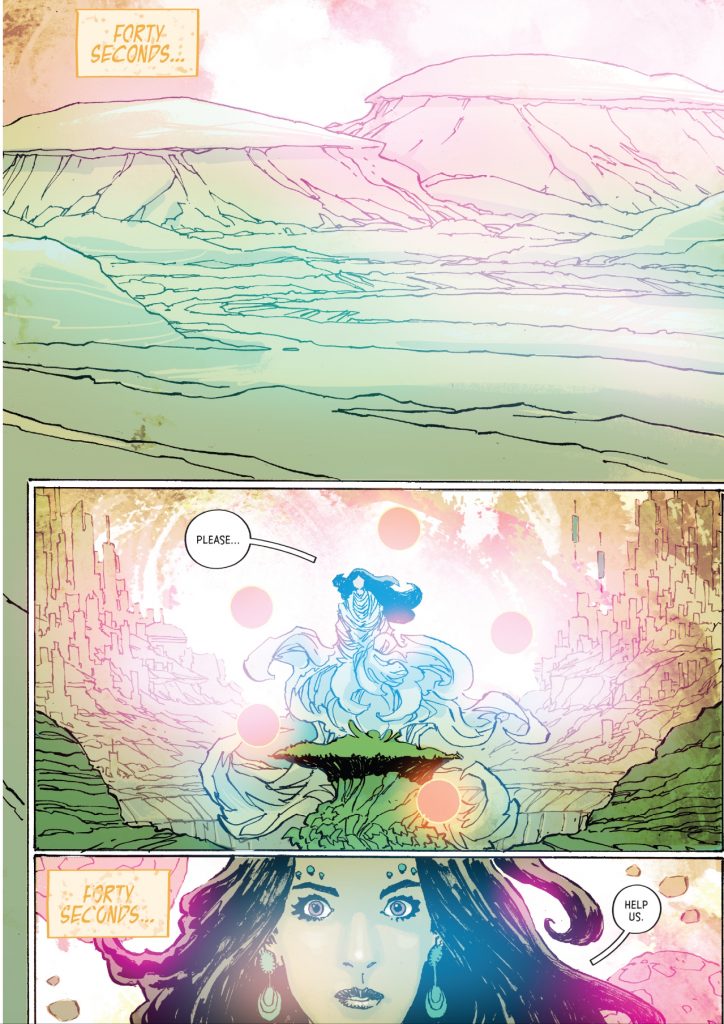 GVN: When Jeremy approached you to work on 40 Seconds, what guidelines did he give you? Did he have a specific vision in mind (he IS an artist after all) or did he leave it in your capable hands. Was a classic science fiction tale something you both wanted to do?
GVN: When Jeremy approached you to work on 40 Seconds, what guidelines did he give you? Did he have a specific vision in mind (he IS an artist after all) or did he leave it in your capable hands. Was a classic science fiction tale something you both wanted to do?
CM: Jeremy and I have known each other and been friends for years and we’ve been wanting to do something together for a while now, so a couple years ago at C2E2 we got to talking and he asked what I might be wanting were we to do something. I’ve always been a sucker when it comes to drawing big sci-fi or fantasy stuff, and he said he had an idea. That idea became 40 SECONDS. So, between two C2E2s, 2019’s and this past one, we went from talking about a thing to doing the thing. Not too bad, really. As for guidelines? No. Our only thing here was just wanting to have as much fun with it as we could. So, success!
Brett Weldele
GVN: I mentioned this in my interview with Jeremy. The color scheme for this first issue really stands out. With pastel colors that are subdued but beautiful to look at. How did you bring colorist Brett Weldele into the fold? The results are impressive.
CM: Brett’s great. We’ve been friends, the three of us, Brett, Jeremy, and I, pretty much from when we got started, the Oni days, so getting him on the book has been a real treat. What he brings, being fantastic artist and storyteller in his own right, is indispensable; he’s got such a great eye, and at the outset we all wanted this book to look different than anything we’ve done before and I think we’ve accomplished that. Seeing the new pages come in after Brett’s done with them is blast.
GVN: If that was your goal, mission accomplished. The fresh and different look was the first thing I noticed. So what are your hopes for 40 seconds? Do you want it be a long running series or perhaps as a limited series? The potential is there in either case.
CM: I think like any story, especially once the world has been built, there’s always the possibility for more, to return to it in some way should the inspiration strike, but I think, for now, telling this one story is the important thing.
GVN: Do you have any other projects coming that you are free to discuss? I’m sure our followers would love to know what’s next for you?
CM: Just started work on a new mini-series but, as of yet, can’t say anything.
The Best of Mitten: Hypothetically
GVN: Finally, I have a habit of closing with a hypothetical question to encourage you to make some hard choices. So here is yours. You already have an impressive portfolio of work. You have worked for many different publishers and with many different characters. A time capsule is being created for the very best representation of the Comic Book art genre. They have asked you, Christopher Mitten to provide four examples of your very best to add to this capsule. Which of your works would you include? Don’t be modest.
CM: Oof! This is always an impossible question. Corny as it sounds, they all mean a lot to me; I can look at a book, sometimes a page, and remember what was happening in my life during that time, so it’s always such an odd thing to choose, but okay, I’ll play…40 SECONDS aside (so I’m cheating and really giving you five) let’s go UMBRAL, WASTELAND (specifically the final arc), WITCHFINDER: THE REIGN OF DARKNESS, and RASPUTIN: THE VOICE OF THE DRAGON.
This slideshow requires JavaScript.
GVN: Five is OK. I asked you not to be modest. If I had that many great works, I’d pick five, too. Thank you so much for your time and we will be following the next four issues of 40 seconds with interest. If your first issue is any indication, you’re looking at a successful beginning.
Chris has a myriad of great works and 40 Seconds is just another in a long line of success. If you get the chance, check out the first issue of the five book series and let us know what you think. Also check out our interview with Christopher’s cohort in creation Jeremy Haun as well as our review for the first issue.
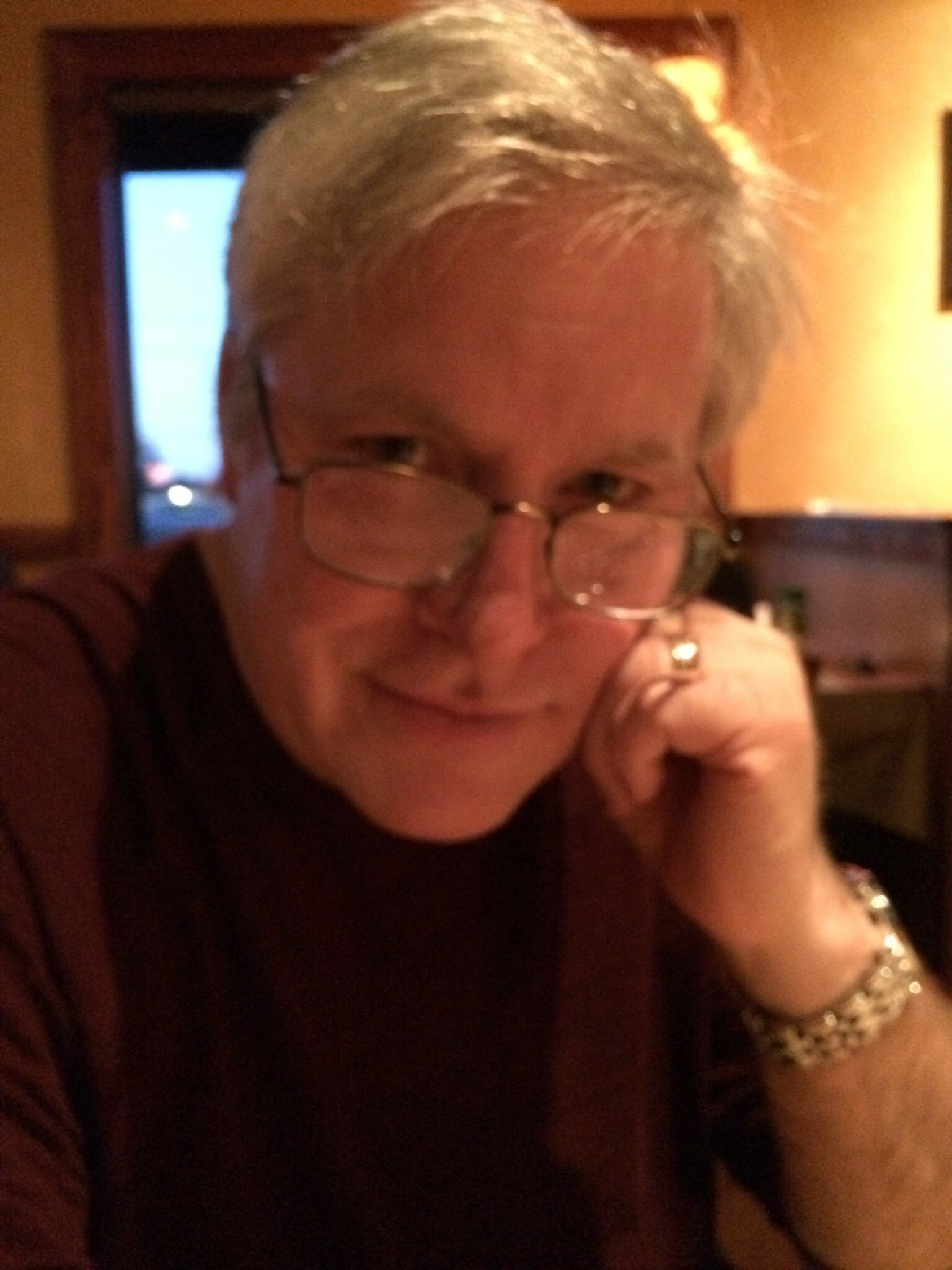
Senior Writer at GeekVibesNation – I am a 50 something child of the 70’s who admits to being a Star Trek/Star Wars/Comic Book junkie who once dove head first over a cliff (Ok, it was a small hill) to try to rescue his Fantastic Four comic from a watery grave. I am married to a lovely woman who is as crazy as I am and the proud parent of a 18 year old boy with autism. My wife and son are my real heroes.


